Philippines, 16 Dec – An update from MapAction Operations Director, Jonny Douch who deployed early in the emergency.
On 7 November MapAction deployed to the Philippines, the day before Typhoon Haiyan struck. Although we all knew it was likely to affect vulnerable communities, none of us could have predicted the scale of the devastation that followed.
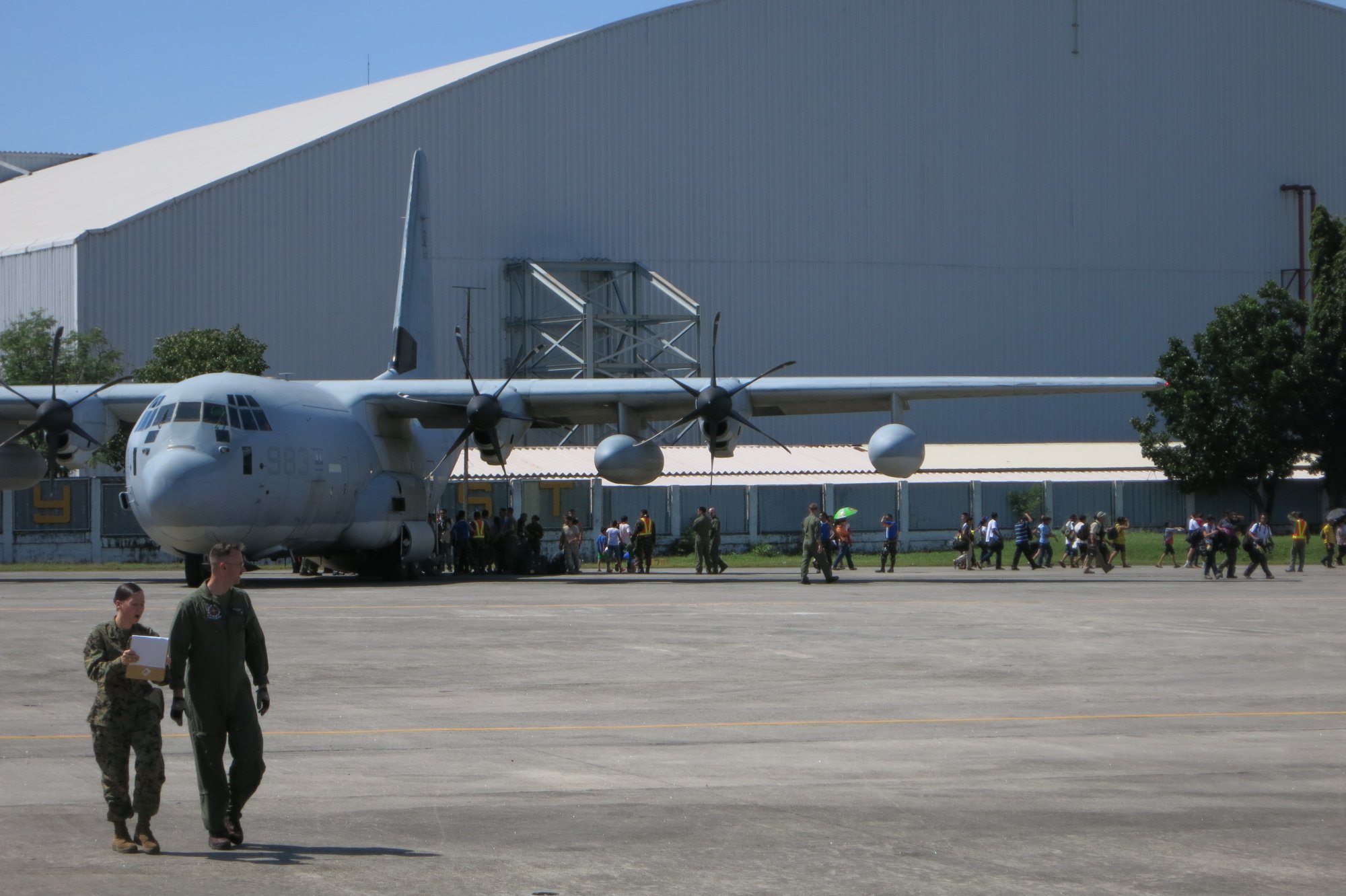 Photo right: Survivors of the storm arrive in Manila on a US military C130. Every plane out of Tacloban was full of people leaving the city
Photo right: Survivors of the storm arrive in Manila on a US military C130. Every plane out of Tacloban was full of people leaving the city
It soon emerged that the area that had borne the brunt of the typhoon was around Tacloban City. I headed there amongst the cargo in a US military plane to assess how and where MapAction could help most. I arrived in the dark.
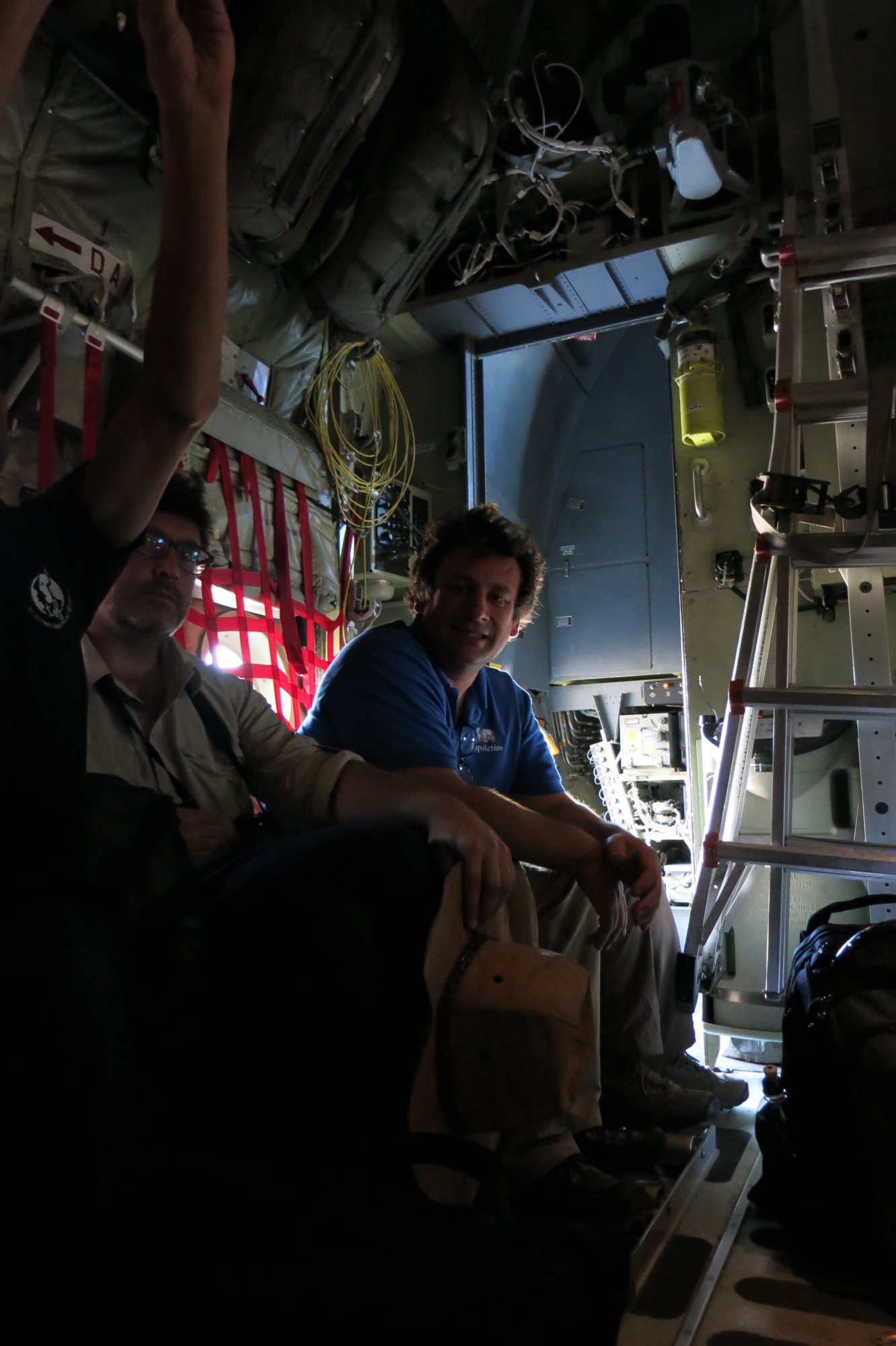 Photo left: Jonny, Operations Director flying amongst the cargo in the first available flight to Tacloban
Photo left: Jonny, Operations Director flying amongst the cargo in the first available flight to Tacloban
The scene that greeted me was like something out of a disaster movie. The terminal building had been smashed by a massive wave that had carried off everyone who was trying to get a flight out. All was dark confusion. The noise from the planes made it all but impossible to hear and phone calls virtually impossible.
As we headed into the city, the car headlights lit up a shattered landscape where the storm surge had swept through. Everything was still now. It was an eerie scene, with just a few lonely soldiers at the road blocks to wave us past. It was impossible to see how anybody could have survived here. Bodies were still being recovered from the debris; body bags lined the side of the road awaiting collection.
My first task in Tacloban was to set up MapAction’s base within the United Nations’ coordination centre, where responders would come for the latest information to coordinate relief efforts. It was particularly poignant to reflect on the fact that most of the local people we were working with had lost friends or family. Although you try not to think of these things while you’re there, when you get home you have time to reflect on the immense loss you have witnessed.
The number of organisations arriving was increasing every day, all hungry for the sort of information MapAction was there to provide. The demands on our team were extreme. By the end of this mission, we will have deployed 15 mapping experts, who will have together contributed over 30 weeks of work. We will have produced well over 1,000 different mapped products, which will have been distributed to thousands of responders via web and printed copies. These figures don’t include the efforts our non-deployed volunteers, who have provided unfaltering support throughout– many of whom have taken time off their day jobs to devote their full-time attention to supporting our field team.
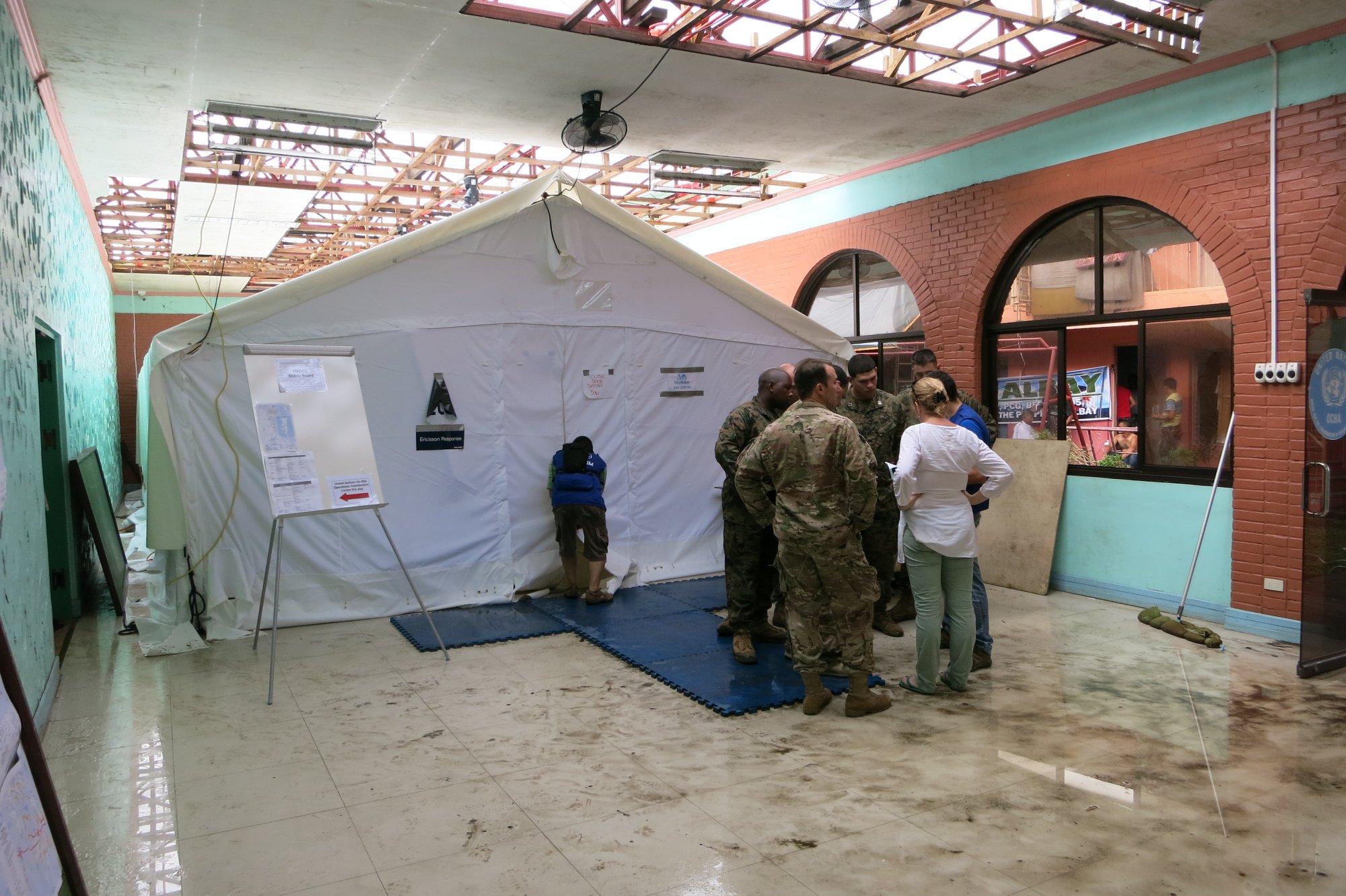 |
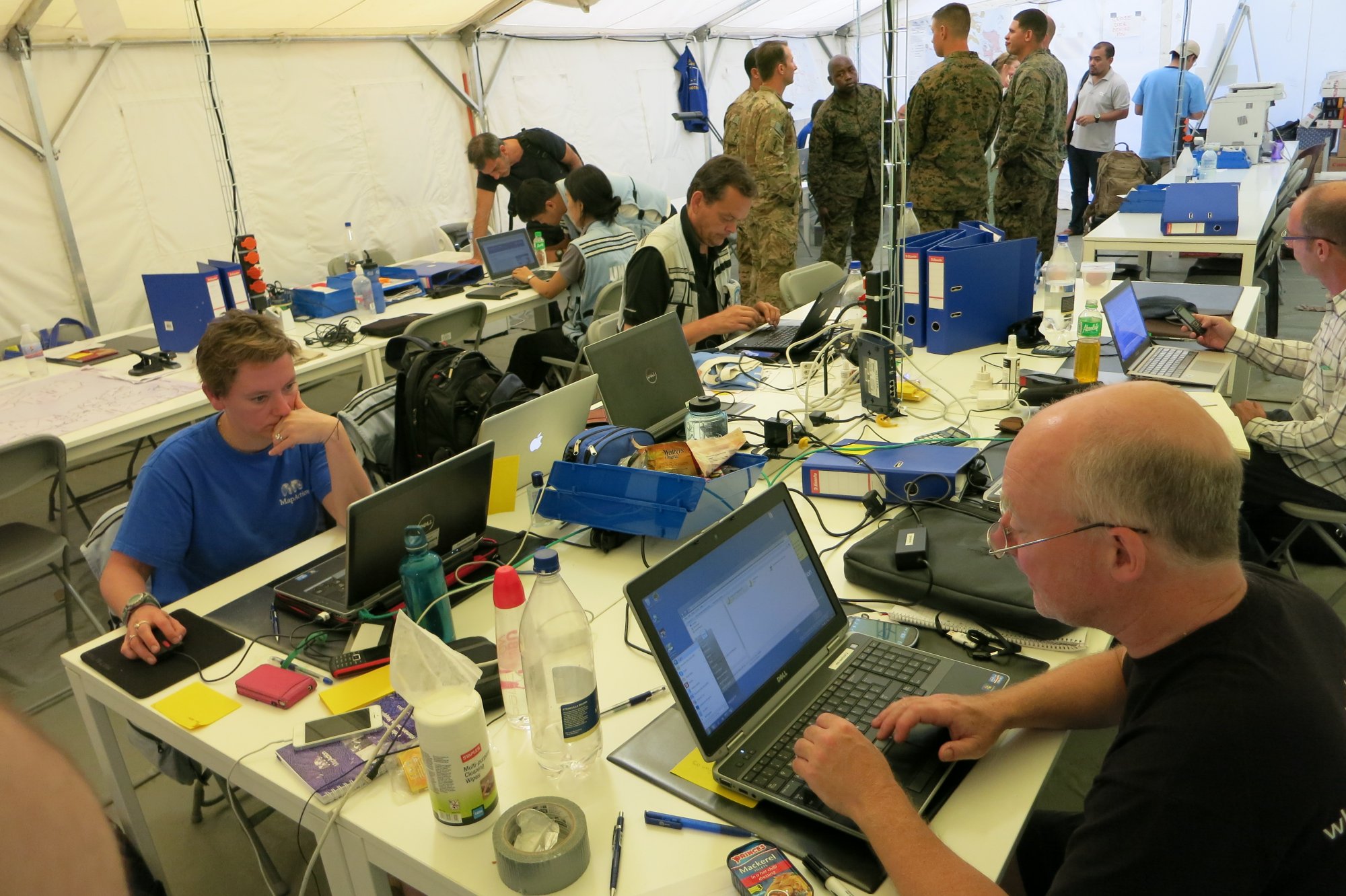 |
|
| 1 and 2: United Nations’ On Site Operations and Coordination Centre, a tent inside a roofless building |
||
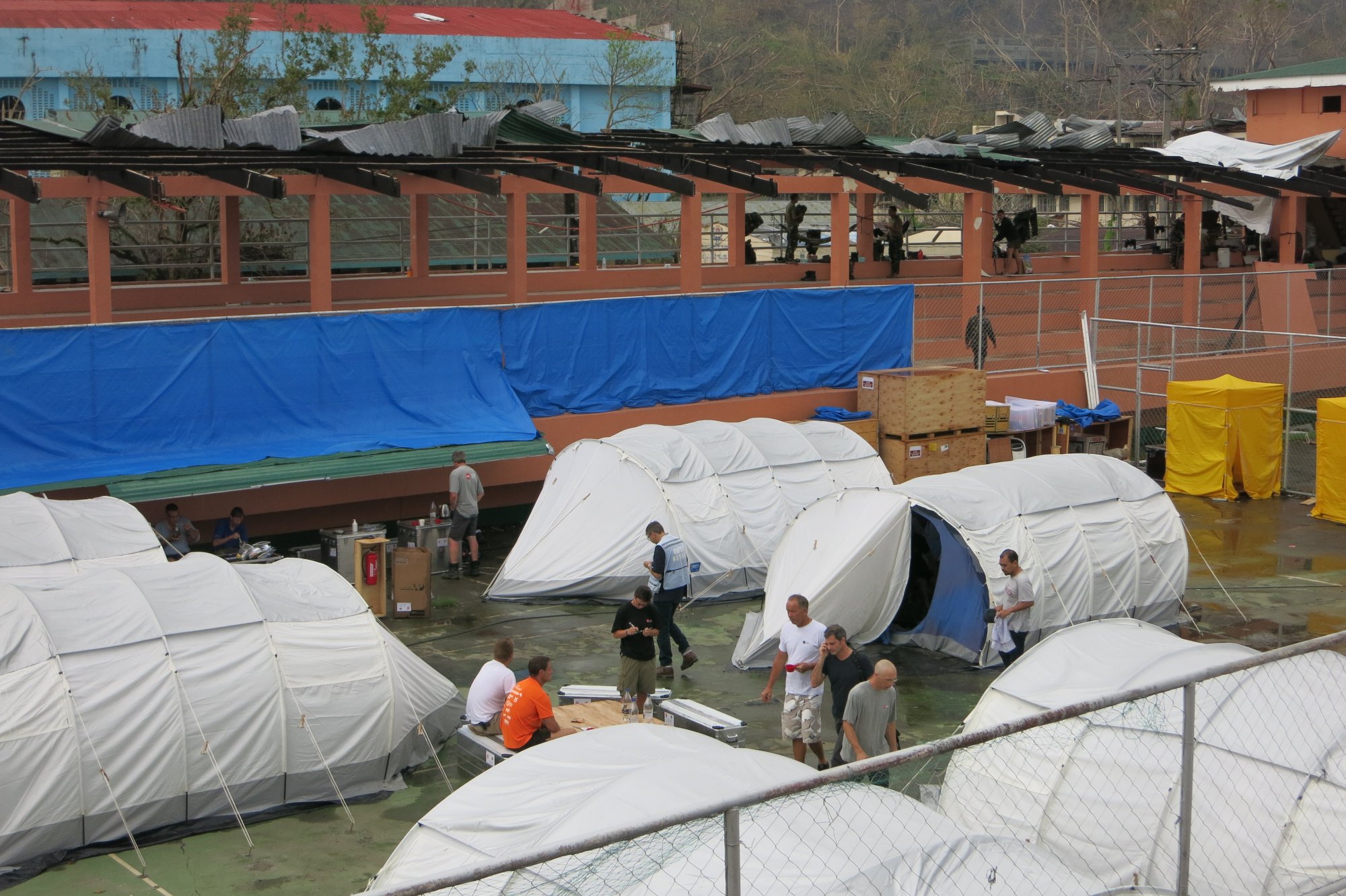 |
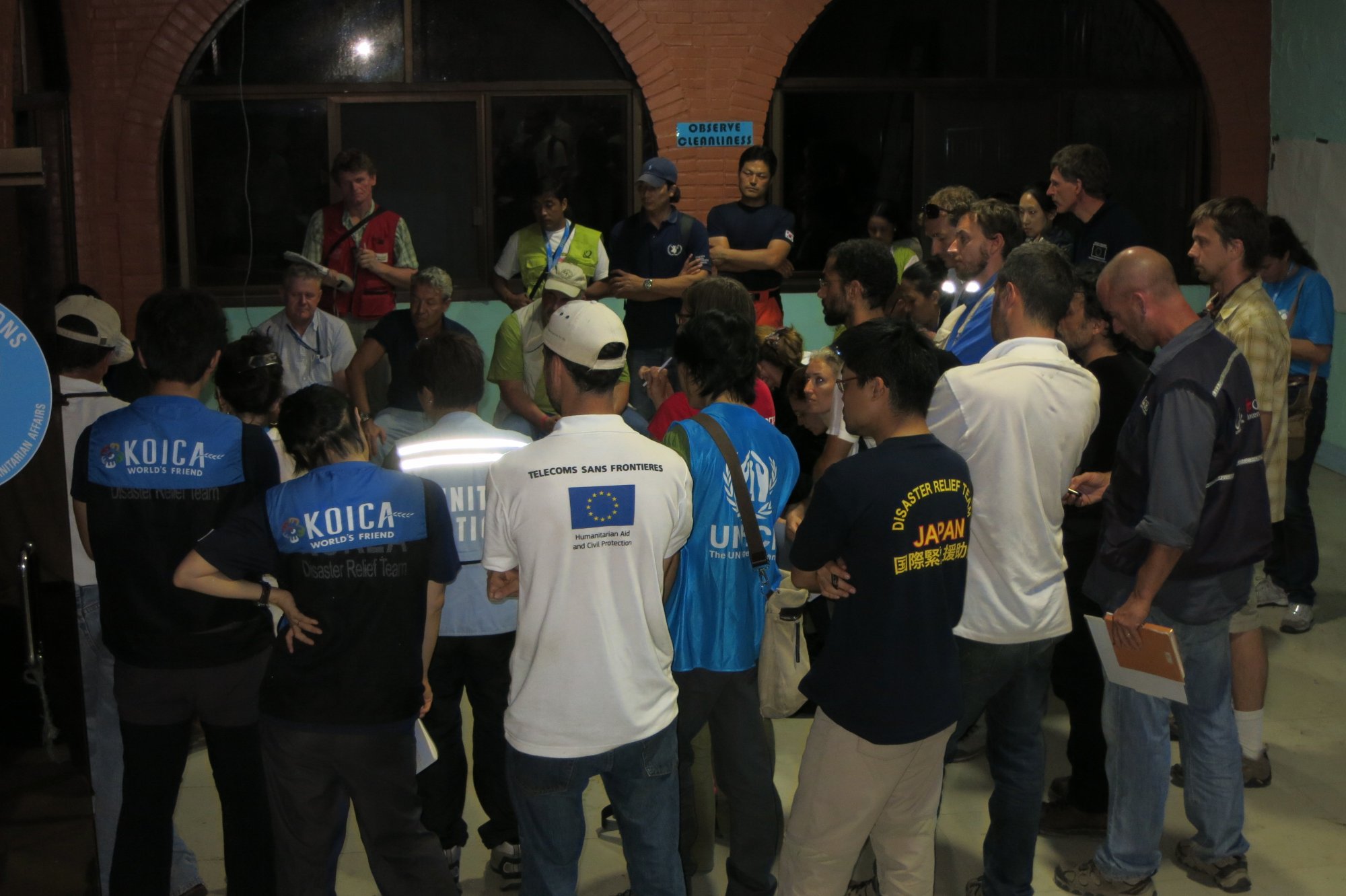 |
|
| 3: The tents where MapAction set up home |
4: Standing up: Inter-agency coordination meeting |
|
 |
||
| 5. A scene from the roadside |
||
When I returned to Tacloban airport, two weeks had passed since the typhoon had struck. It was daylight. Although if anything the destruction was clearer by day, life was reclaiming the land again. Everywhere people were busy clearing up and bringing order to the chaos.
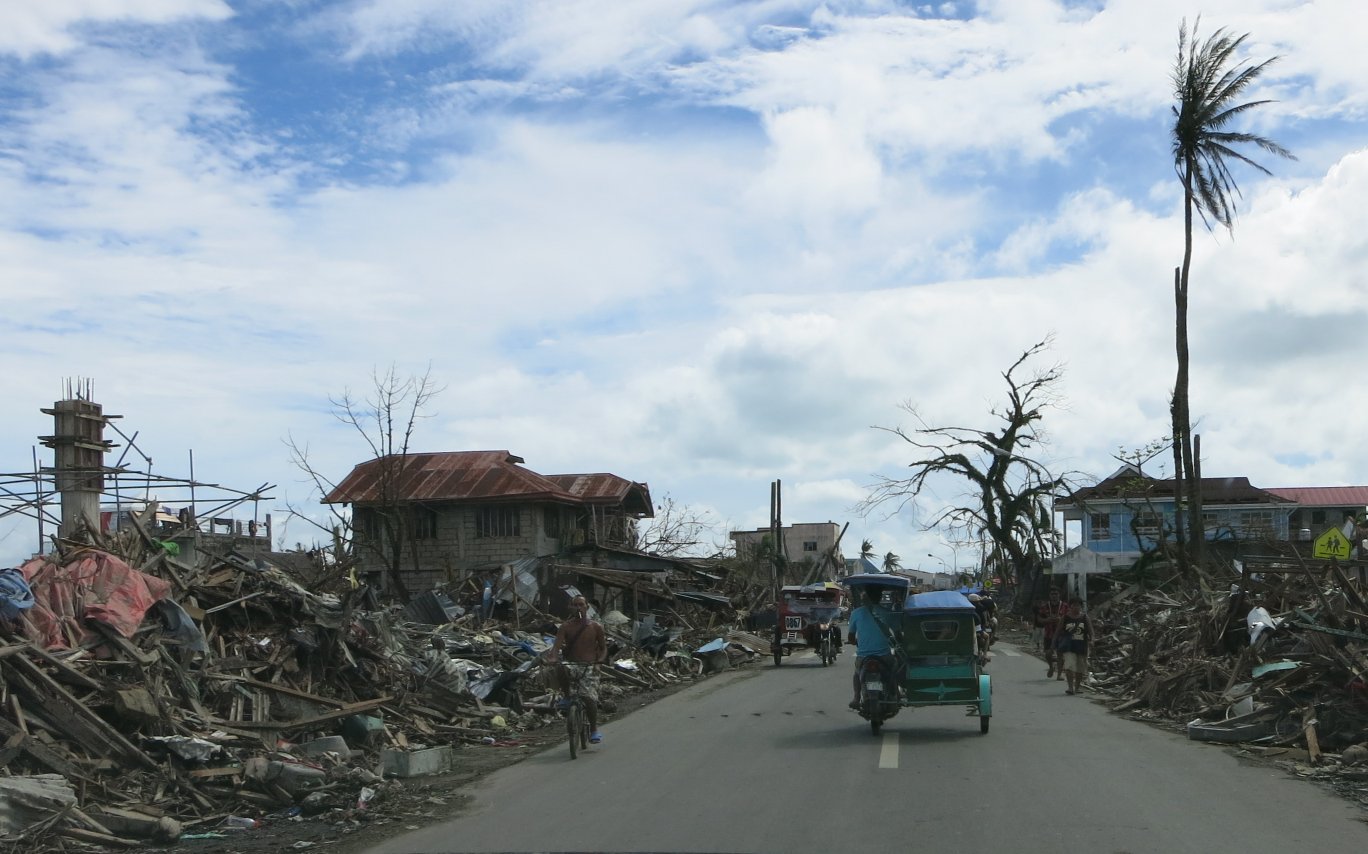 |
| Photo above: the road to the airport |
The airport was now functioning well, although it was a surreal experience to check in and go through security amidst the destruction. Passengers sat in a departure lounge with no wall and just umbrellas to protect from them the rain. We placed our hands over our ears to block out the noise from the military planes delivering aid.
The determination of the staff and passengers to make it work was a moving sight – surely a sign that although the people of the Philippines may never forget Typhoon Haiyan, their remarkable courage and resilience will help them recover from this terrible storm.
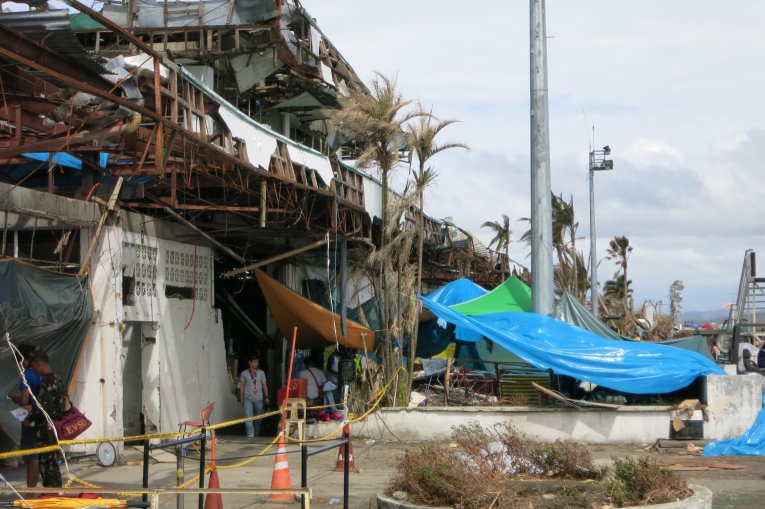 |
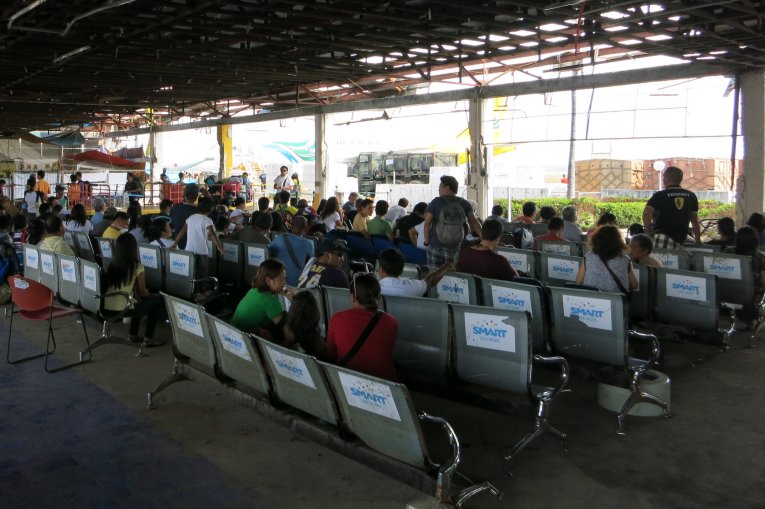 |
|
| Photos above: Normal service resumes at Tacloban airport | ||
